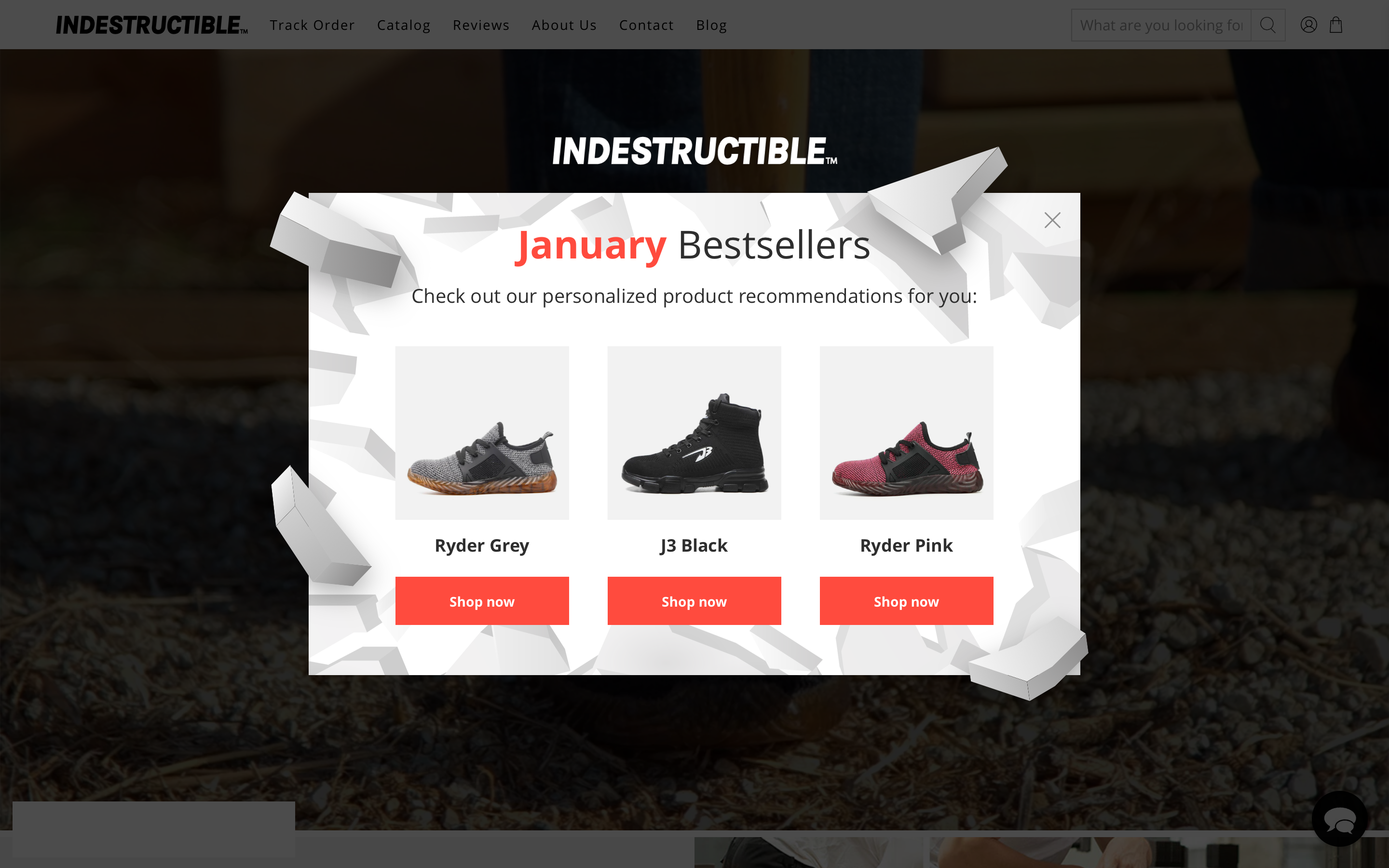Looking for an outstanding ecommerce marketing strategy that will put you ahead of your competitors?
You’re in the right place. Today, we’ll explore 18 proven ecommerce marketing strategies that have helped businesses like yours increase online visibility, drive traffic, and boost sales.
These foolproof ecommerce marketing tips and strategies are going to help you skyrocket your sales and grow your business. Let’s dive in and discover new techniques—from beginner to advanced—that can take your marketing efforts to the next level!
Ecommerce marketing strategies for beginners
Not all marketing strategies are created equal. While some are well suited for the pros, here are some proven ones you can start implementing in your business even if you’re just starting out:
1. Promote newsletter subscription for non-subscribers
One of the most effective ecommerce marketing strategies for increasing newsletter subscribers is actively promoting subscription opportunities.
Making it easy and enticing for non-subscribers to sign up can help grow your database of potential customers and leads without negatively impacting conversion rates.
To make the most out of your email popups, here are some tips to keep in mind:
- Timing: Don’t show the popup immediately when a visitor lands on your site. Give them some time to browse before displaying the popup.
- Value proposition: Clearly communicate the value of subscribing to your newsletter. Will they receive exclusive offers or updates on new products? Make it compelling.
- Design: Ensure your popup is visually appealing and matches the overall look and feel of your website. Avoid clutter and keep it simple.
- Exit intent: Use exit-intent popups to target visitors who are about to leave your site. Offer them a last-minute incentive to subscribe to your newsletter.
- A/B testing: Test different variations of your popup to see what works best for your audience. This can include different copy, design, and timing.
You can get started with these templates from OptiMonk:
2. Stop cart abandonment by offering limited-time deals
It’s no secret… every ecommerce businesses faces cart abandonment: the average cart abandonment rate is 66.5%. However, there are ways to combat this issue and boost conversions.
One effective strategy is to offer limited-time deals to website visitors, which can turn potential customers into loyal ones.
Presenting a secondary offer when customers are about to abandon their cart can increase the likelihood that they’ll complete their purchase. Limited-time deals create a sense of urgency and exclusivity, encouraging customers to act quickly before the offer expires.
Consider offering a discount or free shipping on the customer’s purchase to make your time-limited offer compelling. Make sure the offer is significant enough to grab their attention and encourage them to complete their purchase. Using a countdown timer on your popup can also create a sense of urgency, further encouraging customers to act quickly.
3. Remind users about their coupons to encourage redemption
Implementing coupon reminder bars is a smart ecommerce marketing strategy that can increase sales and customer loyalty.
Display a persistent follow-up sticky bar to remind customers of their active coupon code, which helps to prevent them from forgetting to use it during their shopping experience.
This visual cue encourages customers to complete their purchases while enjoying an uninterrupted shopping experience.
Research has shown that businesses can improve their coupon redemption rates by up to 50% by using follow-up sticky bars, making it one of the best ecommerce marketing strategies to maximize revenue.
To make the most of coupon reminder bars:
- Ensure the bar is visible and stands out on the page with bright colors and attention-grabbing text.
- Provide clear instructions on redeeming the coupon and include a call-to-action (CTA) to increase the likelihood of coupon redemption.
- Create a sense of urgency by using a countdown timer to encourage customers to act quickly.
4. Gamify the user experience with a lucky wheel
Are you looking to enhance the user experience on your ecommerce website and improve your conversion rates? Consider gamification!
Incorporating gamified campaigns into your ecommerce marketing strategy can be a valuable tool for increasing customer acquisition and improving overall conversion rates.
One gamification approach is the lucky wheel campaign. This campaign involves a spinning wheel that offers customers a chance to win one of several different prizes or discounts.
To participate, customers are asked to enter their email addresses or engage with your website in some way. Once they do so, they’re offered a spin on the wheel in exchange.
Not only does this approach encourage engagement with your website, but it also allows you to capture valuable email addresses for future marketing efforts. By offering prizes or discounts tailored to your audience, you can encourage visitors to take a chance and interact with your brand in a fun, playful way. Gamified campaigns like this have been shown to have a conversion rate of around 13%.
Before implementing a gamified campaign, it’s essential to consider your audience and tailor your approach accordingly. While gamification can effectively capture the attention of younger, tech-savvy audiences, it may not fit more traditional shoppers.
Get started with these lucky wheel templates:
5. Promote the most popular products of each category
Are you struggling to help your customers navigate a wide range of products on your ecommerce site? If so, showcasing your most popular products in each category can be an effective marketing strategy.
By highlighting the most viewed or most frequently purchased products, you can provide social proof and help your visitors shop more confidently. This approach can ultimately increase the number of sessions with product views by up to 20%, leading to increased sales and revenue.
To effectively showcase your most popular products, consider creating a dedicated “Most Popular” section on your homepage or category pages.
You can also use a “Best Seller” badge or label on the product image itself to catch the customer’s attention and give them a quick idea of which products are most popular.
Regularly updating the products featured as “most popular” or “trending now” is crucial to keep the content fresh and engaging for your customers. You can use analytics tools to track the performance of your popular product campaigns and optimize them for even better results.
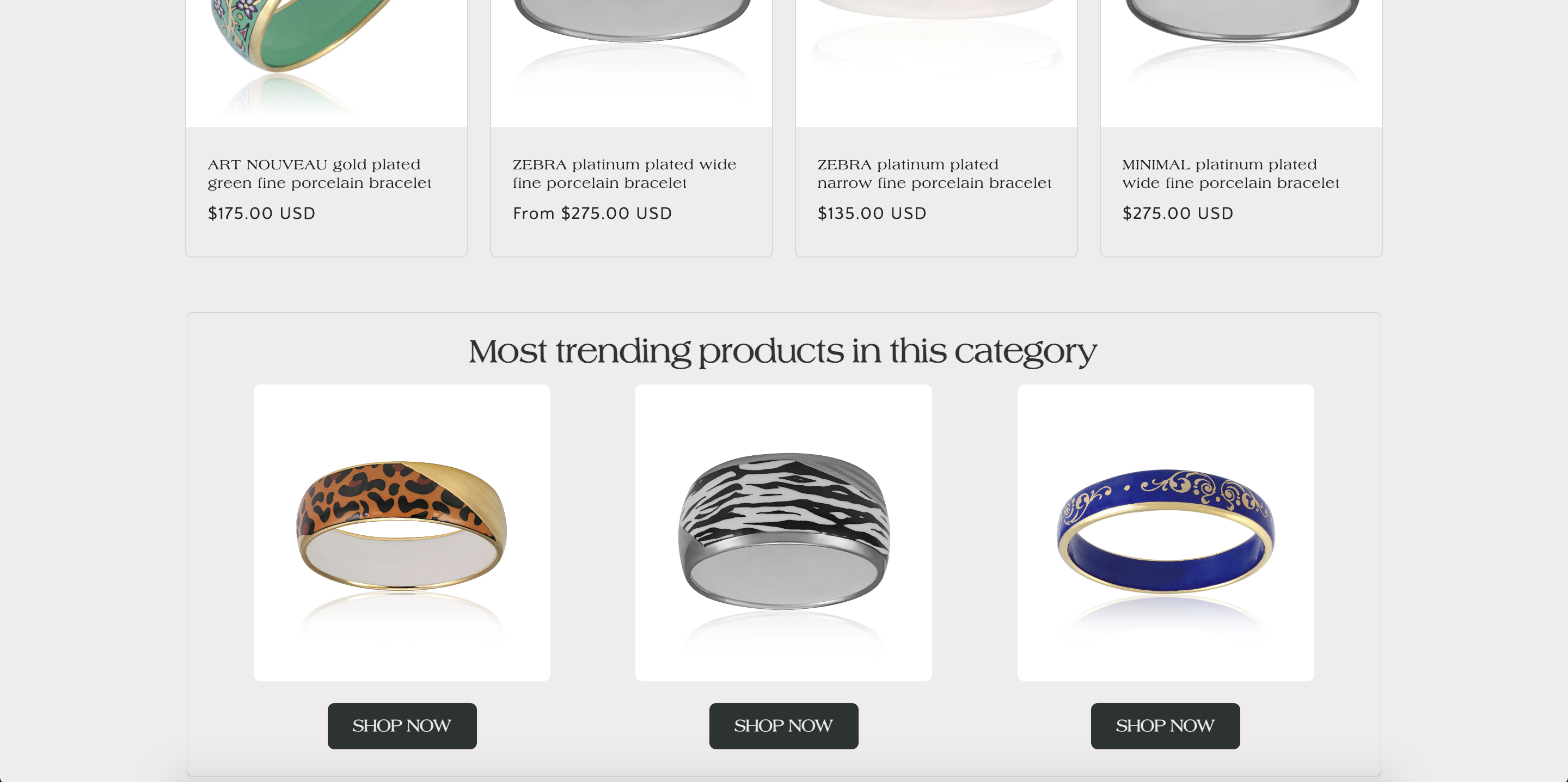
6. Help returning visitors by reminding them where they left off
As an ecommerce business, you should remember that a significant portion of your traffic will be returning visitors who may have already shown interest in specific products or categories.
To optimize their shopping experience and encourage them to complete their purchase, it’s crucial to facilitate their journey, and that means helping them pick up right where they left off.
One effective way of doing this is by displaying previously viewed products in a personalized welcome message when they return to your site. This serves as a helpful reminder and makes it easy for them to resume their shopping experience, all while showing them that you value their time and understand their needs.
Here’s how Vegetology did it:
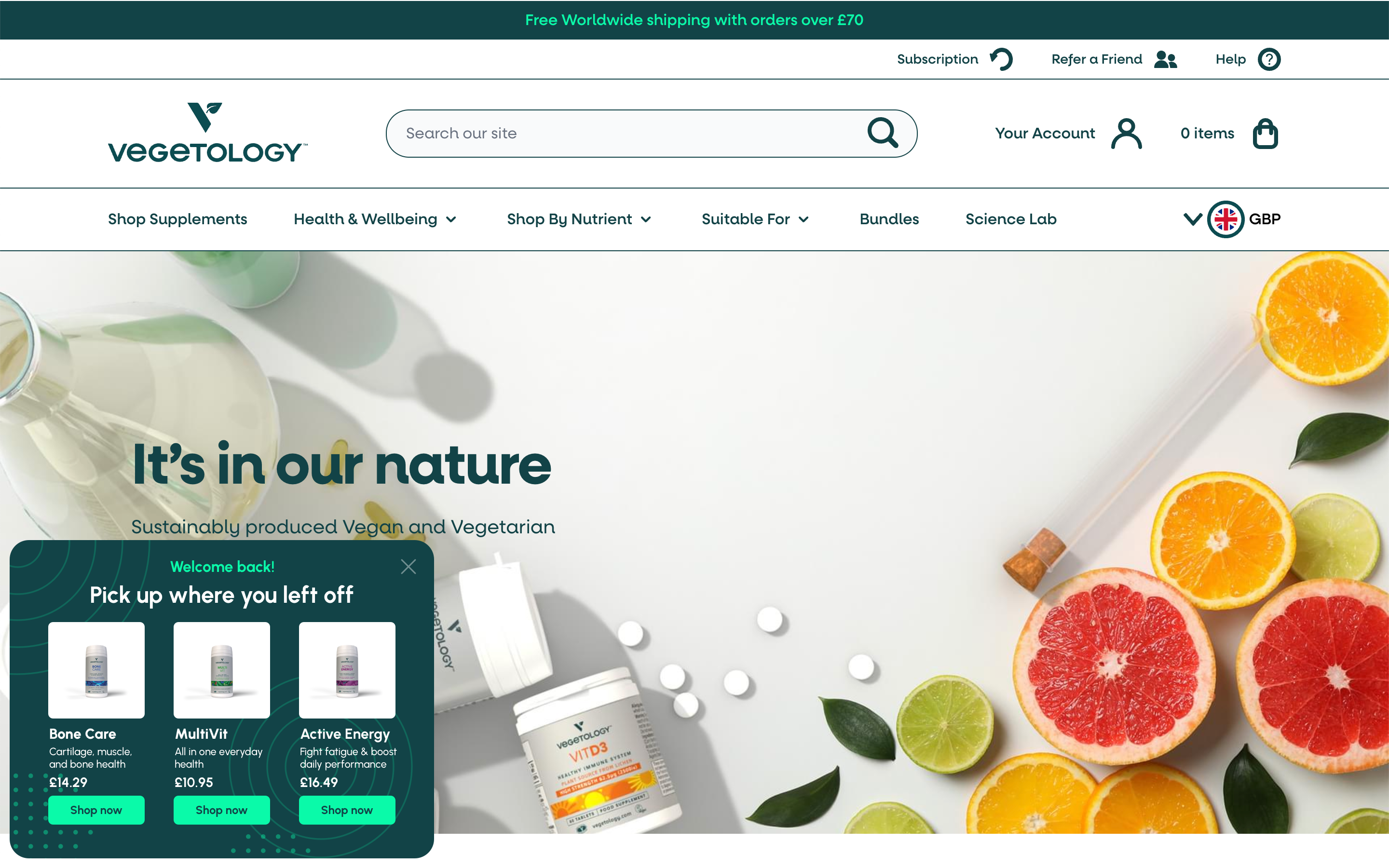
7. Launch a post-purchase attribution survey
If you’re investing in brand building, demand generation, and offline or social marketing but you’re unsure about how effective these are, you’re not alone.
Google Analytics often fails to detect these strategies. Moreover, most customers use multiple devices, making it difficult to track their discovery of your brand.
To obtain accurate attribution data, ask your customers where they heard about you via a popup on your thank you page. You can motivate them to answer by offering an additional discount for their next purchase.
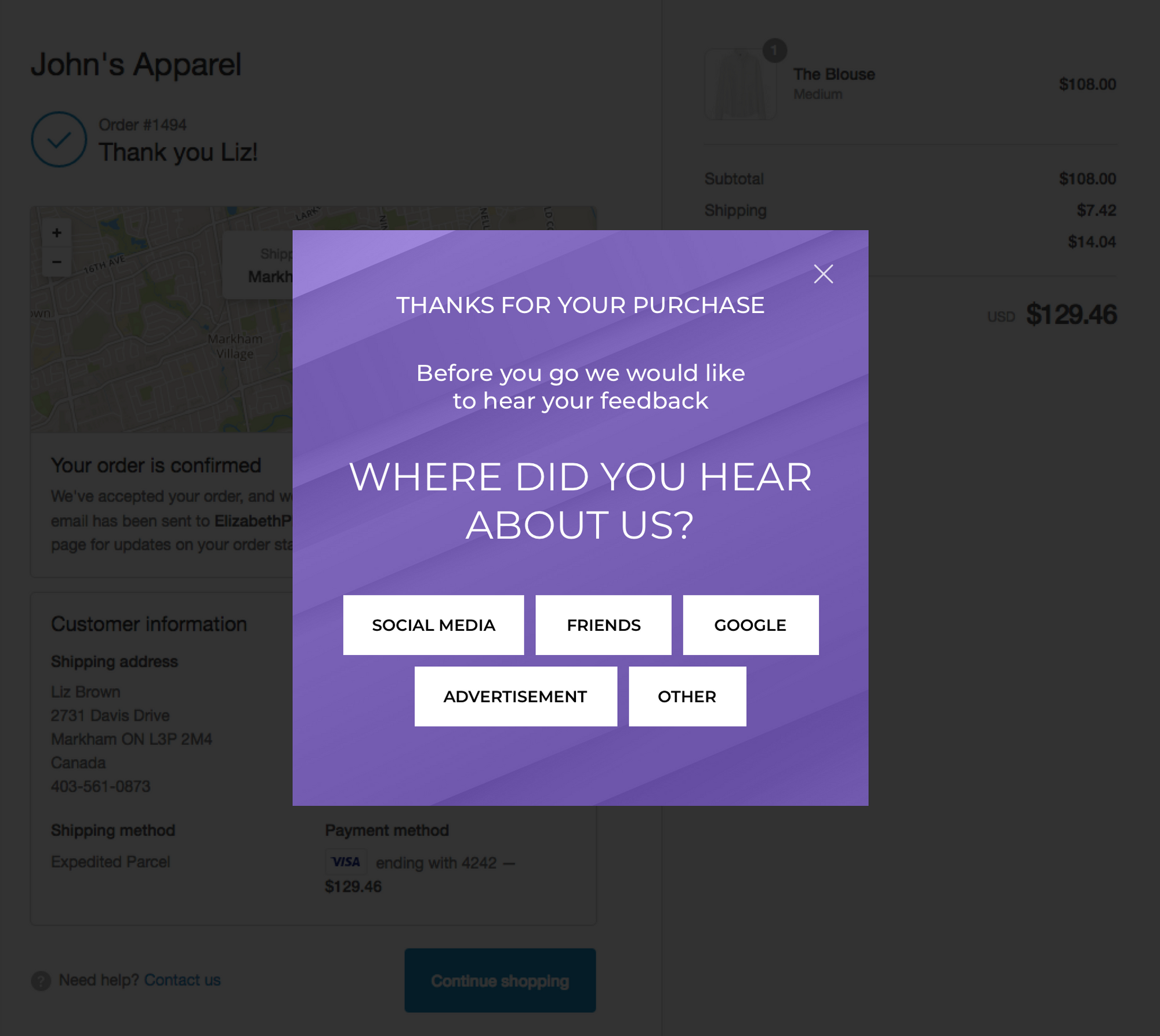
8. Improve user experience by collecting feedback right after purchase
If you’re looking for ways to improve your ecommerce marketing strategy, collecting feedback from your customers right after they make a purchase can be incredibly effective.
Customers are more likely to respond when they feel positive about their purchase and their memory of the experience is still fresh.
Here are a few ideas to keep in mind when collecting feedback:
- Your feedback form should be easy to complete and shouldn’t require too much time from your customers.
- Make sure you ask the right questions that will provide you with actionable insights. For example, you could ask about the checkout process, shipping times, or product quality.
- Offering an incentive can also encourage more customers to complete your feedback survey. Consider offering customers a discount to use on their next purchase as a thank you for their feedback.
Collecting feedback right after purchase can help you improve your website and user experience for future customers. It’s one of the best ecommerce marketing strategies to improve customer retention and loyalty.
Intermediate ecommerce marketing strategies
Already have some experience in ecommerce marketing? Great! You can consider implementing these strategies:
9. Promote a free shipping threshold based on cart value
Are you looking to boost your average order value on Shopify and increase your revenue? Implementing a dynamic free shipping bar is a great place to start.
Research shows that 9 out of 10 consumers consider free shipping to be a top incentive for shopping online, making it a powerful tool for encouraging customers to add more items to their cart (and complete the checkout process).
By displaying how much more a customer needs to spend to qualify for free shipping, you can quickly and effectively increase your average order value.
To implement this tactic, simply create a sticky bar with Smart Tags that dynamically updates to display the exact additional value needed to qualify for free shipping. By doing so, you can increase your average order value by up to 5%.
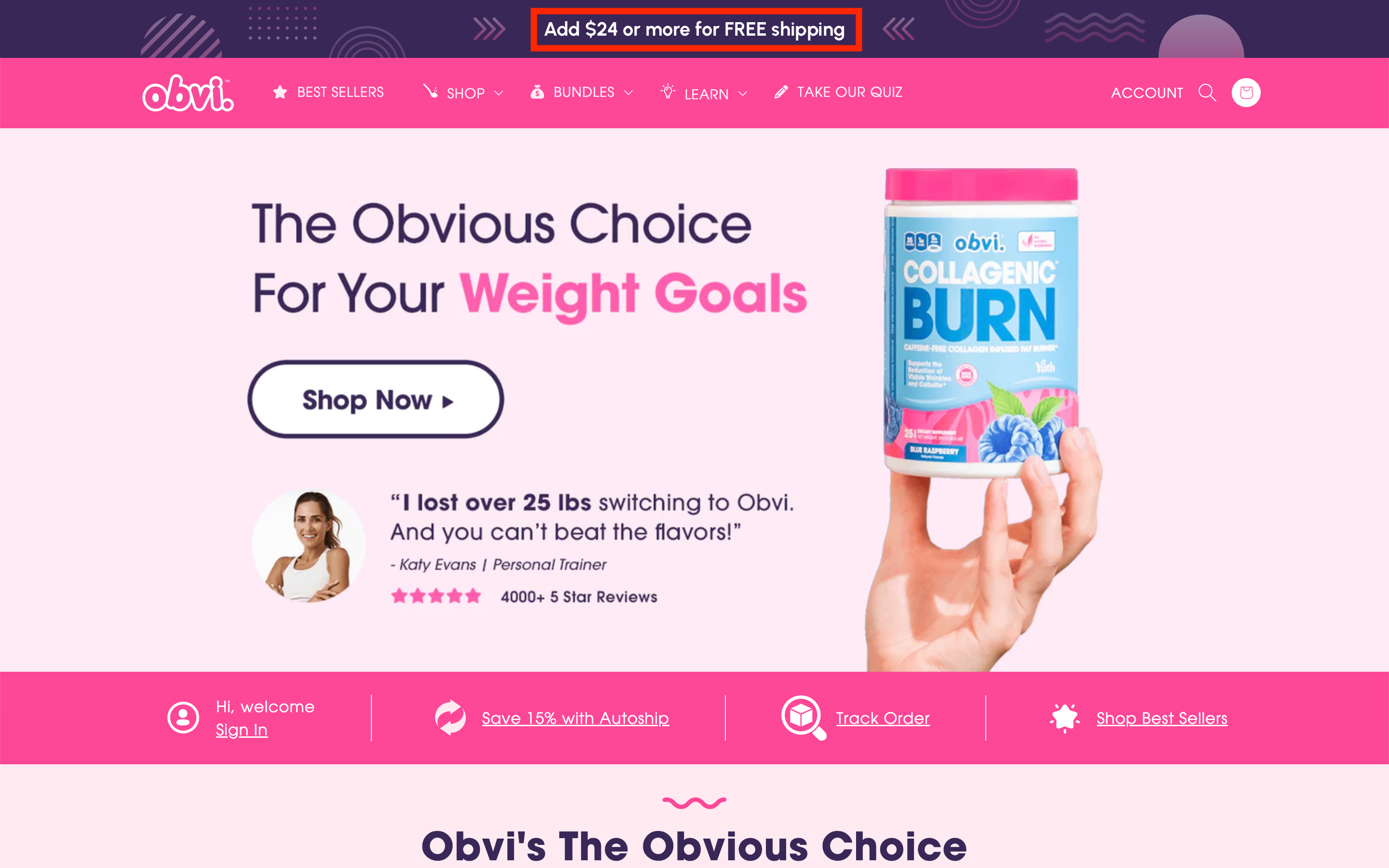
10. Dynamically personalize your welcome popups with country names
Want to improve your site for your international customers and boost your ecommerce sales without putting in too much effort? A great way to do this is by personalizing your welcome popups with messages tailored to specific countries.
This simple yet powerful approach can help you establish a deeper connection with your international audience and enhance their overall experience on your website.
However, manually implementing this strategy can be challenging, which is where Smart Tags can help. With Smart Tags, you can automatically personalize your popups for each visitor, mentioning their country’s name to create a more engaging and memorable experience. This is especially useful for ecommerce businesses with significant international traffic, as it allows you to attract potential customers and retain loyal ones with minimal effort.
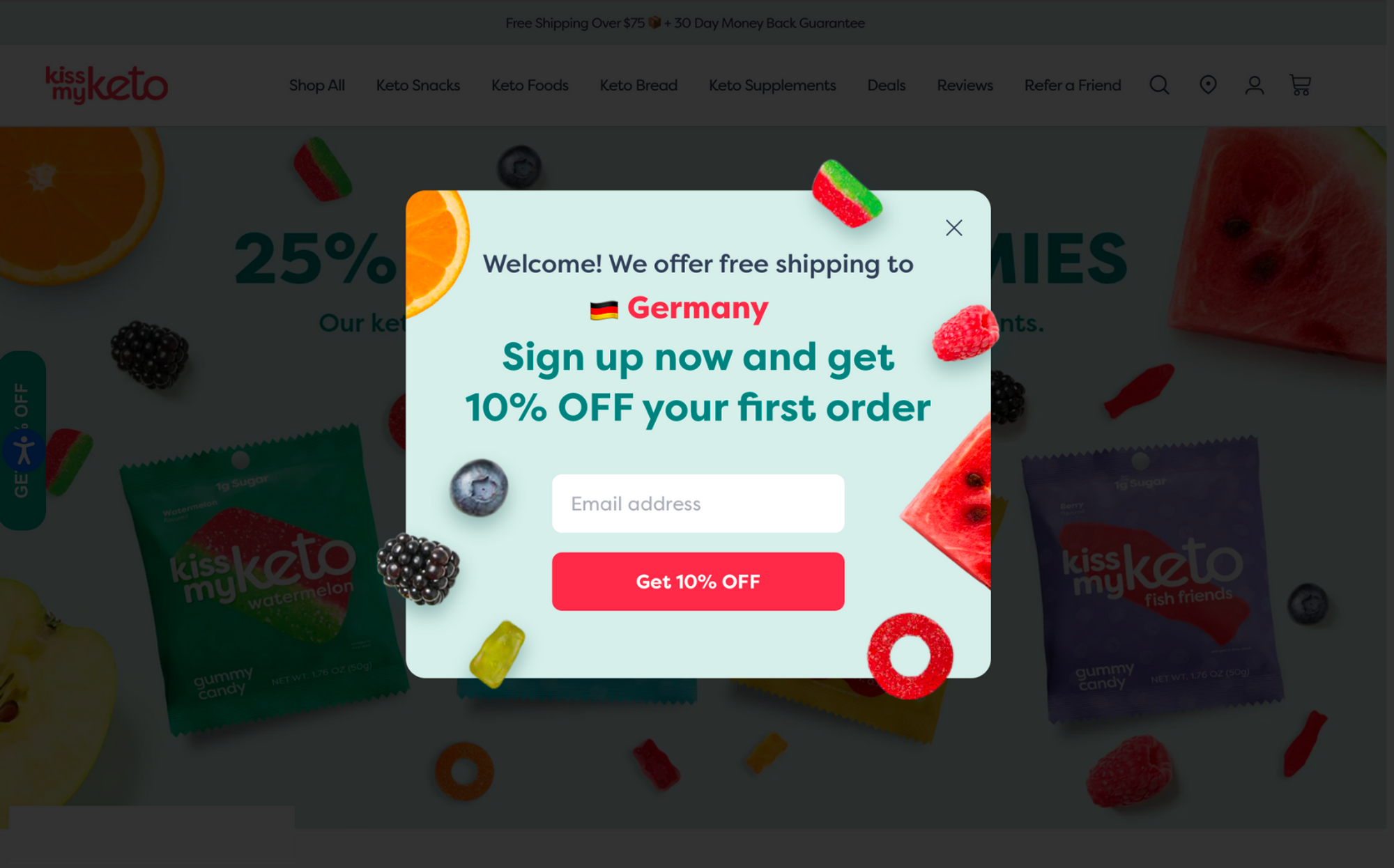
11. Build your email and SMS list at the same time
Are you torn between email list building and the temptation to move into SMS (text message) marketing?
Are you tempted by SMS marketing’s high open and click-through rates, but worried that if you try to collect phone numbers and email addresses you’ll lower your conversion rates?
We have a solution for you: the Trojan Horse method.
This method involves asking for an email address first, and then offering an additional incentive in exchange for a phone number. By doing so, you can increase your chances of converting your email subscribers into SMS subscribers by anywhere from 30% to 80%, depending on the incentive quality. With this approach, you can enjoy the benefits of SMS marketing without compromising your conversion rates.
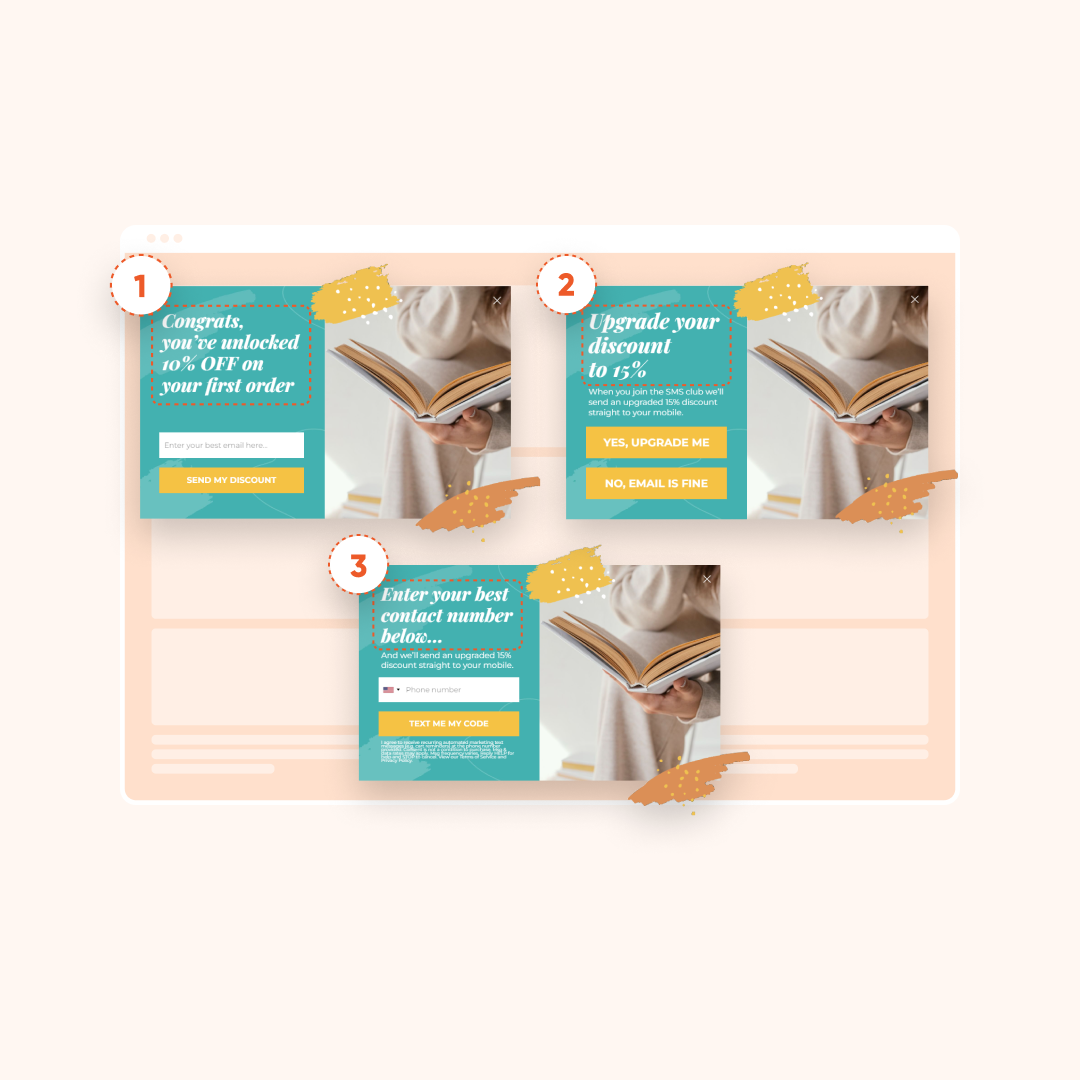
You can get started in just a few minutes with our ready-to-use templates:
12. Recommend relevant products in blog articles
Are you a blogger who often discusses products in your articles? If so, consider incorporating embedded product recommendations to increase your blog’s conversion rates.
By promoting products that are relevant to the topic of your blog post (like energy-boosting smoothies for a post about gaining more energy), you can capture the attention of your readers and entice them to make a purchase.
Not only can this tactic boost your conversion rates, but it can also increase engagement and cart value on your website. So why settle for providing informative blog articles when you could be offering your readers the opportunity to take action and purchase related products?
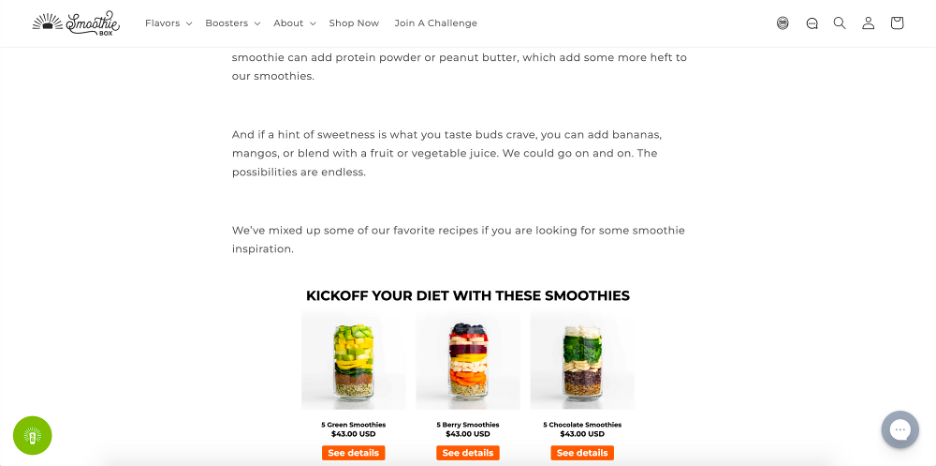
13. Encourage product discovery by promoting your top products on autopilot
Discounts may be a popular ecommerce strategy, but offering them to visitors who come from Google Shopping Ads or price comparison sites may not be effective.
Why not?
Because these visitors were already aware of your prices before they came to your site. If they’re about to leave, the issue is probably not related to price.
Instead, focus on product discovery by promoting your trending products in an exit-intent popup to decrease bounce rates. Use this dynamic tactic by creating a single exit-intent popup and setting it up correctly for your Google Ads traffic.
14. Personalize your homepage messaging for returning customers
Imagine a returning customer visits your site and is greeted by their name on the homepage. This simple gesture instantly makes them feel more connected to your brand and shows that you value their business.
But it doesn’t stop there. By using the information you have about their past purchases and browsing history, you can present them with relevant information and product recommendations.
For example, if they previously purchased a specific type of product, you can feature similar products or accessories for that product on the homepage.
Personalization is proven to increase customer loyalty and drive sales. So take the time to analyze your customer data and create personalized experiences for your returning customers. Not only will it make them feel special, but it will also drive more sales for your ecommerce business.
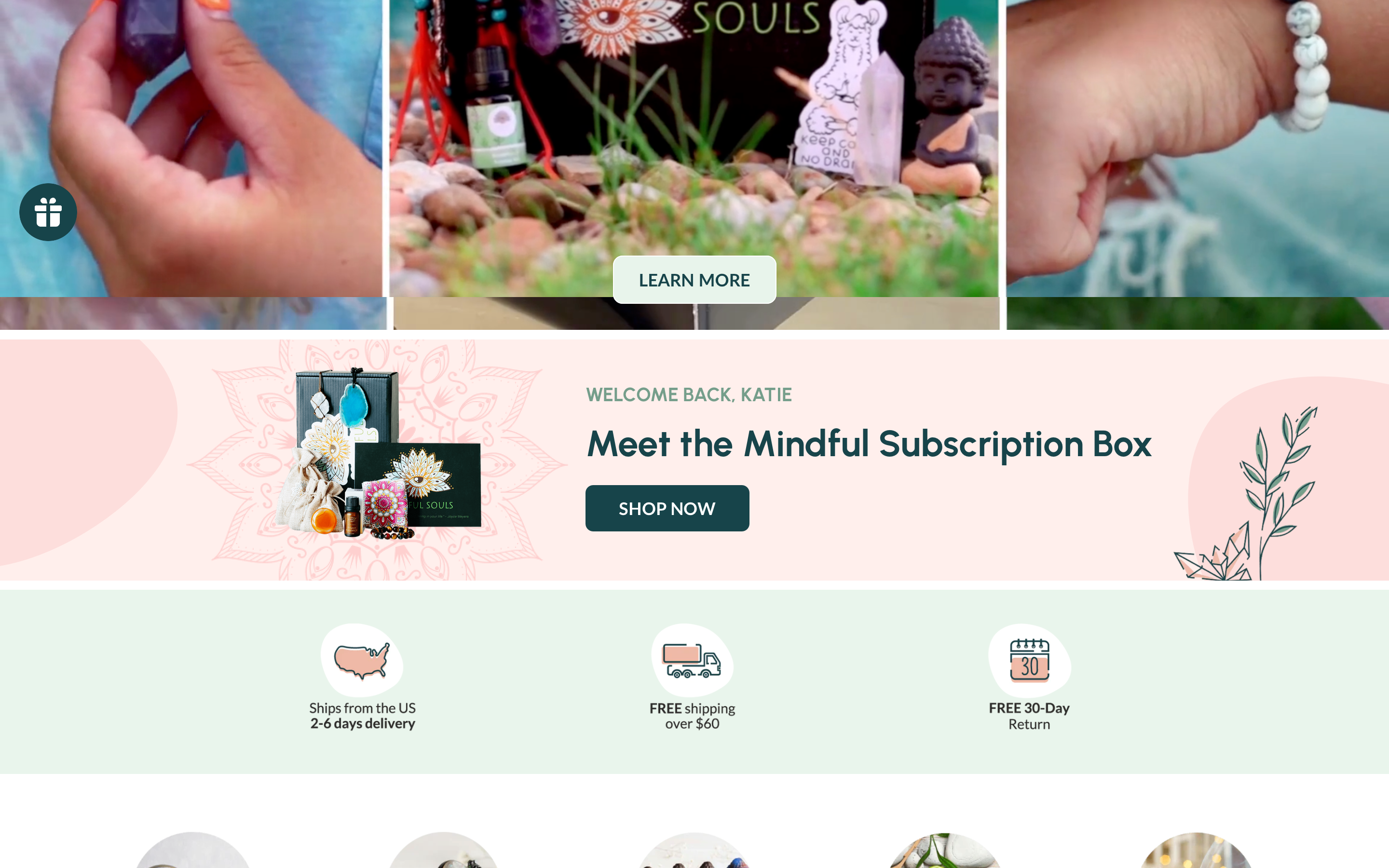
15. Collect 5-star reviews more effectively in a compliant way
Collecting reviews from satisfied customers is crucial for building trust and credibility, and it should be a priority for any ecommerce business. If you’re struggling to gather reviews, consider an embedded content strategy.
One practical approach is to greet returning customers with a personalized message on your homepage and ask them how satisfied they are with their previous purchase.
If they give a positive rating, such as 5 stars, redirect them to a review platform like Trustpilot. On the other hand, if they provide a negative rating, ask a follow-up question to collect feedback about their experience.
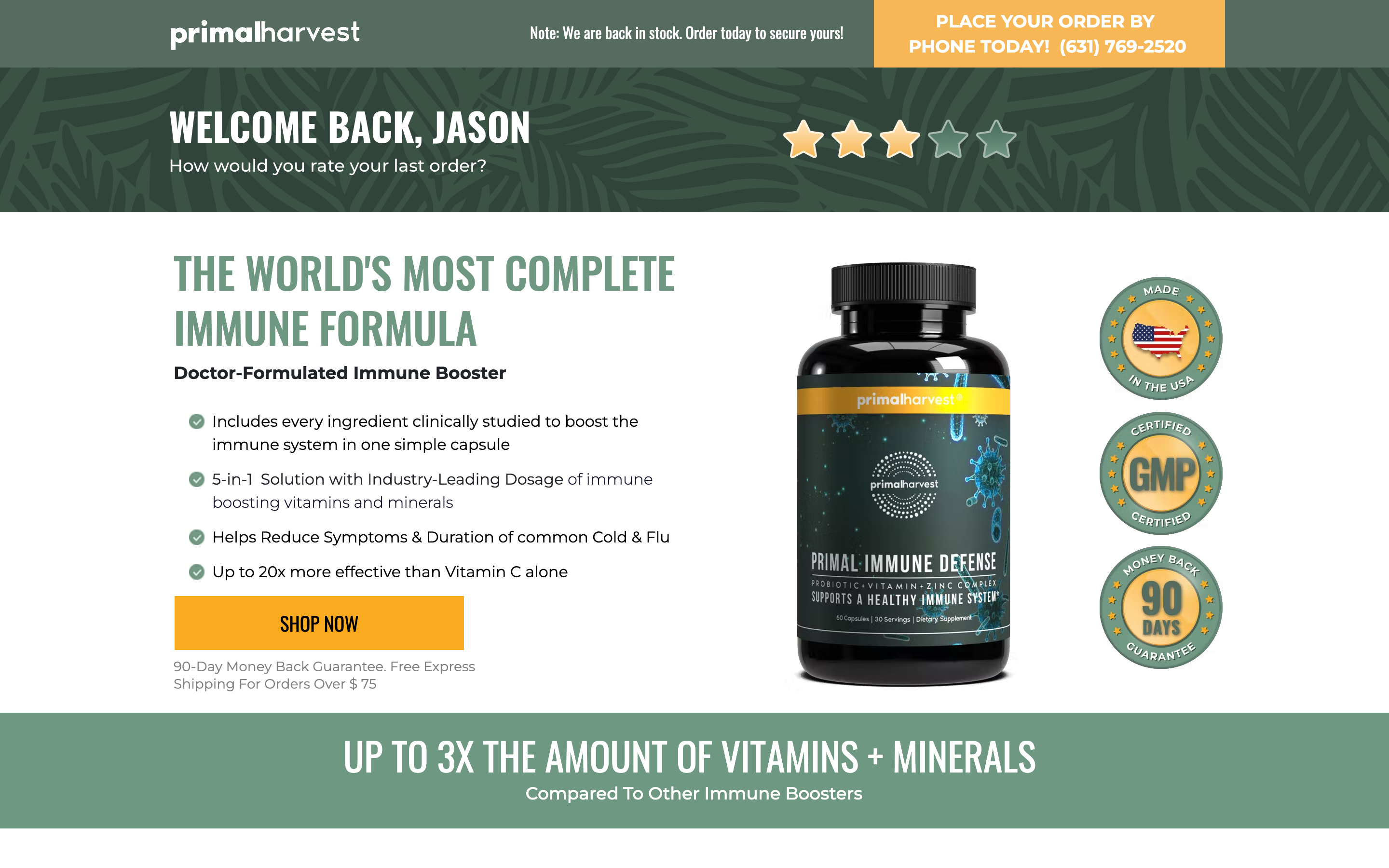
Advanced ecommerce marketing strategies
Already a pro at your ecommerce marketing game? Here are a few advanced tactics you’ll find helpful:
16. Personalize your offers for top referral partners
Do you work with referral or affiliate partners who bring significant traffic to your website?
You should consider showing personalized welcome messages to these visitors. For example, you could display the referral partner’s name in your message. This way, the visitors seeing the messages will view your offers as more special.
You can do this easily with OptiMonk’s URL targeting feature, and this strategy could increase the conversion rate by up to 50%.
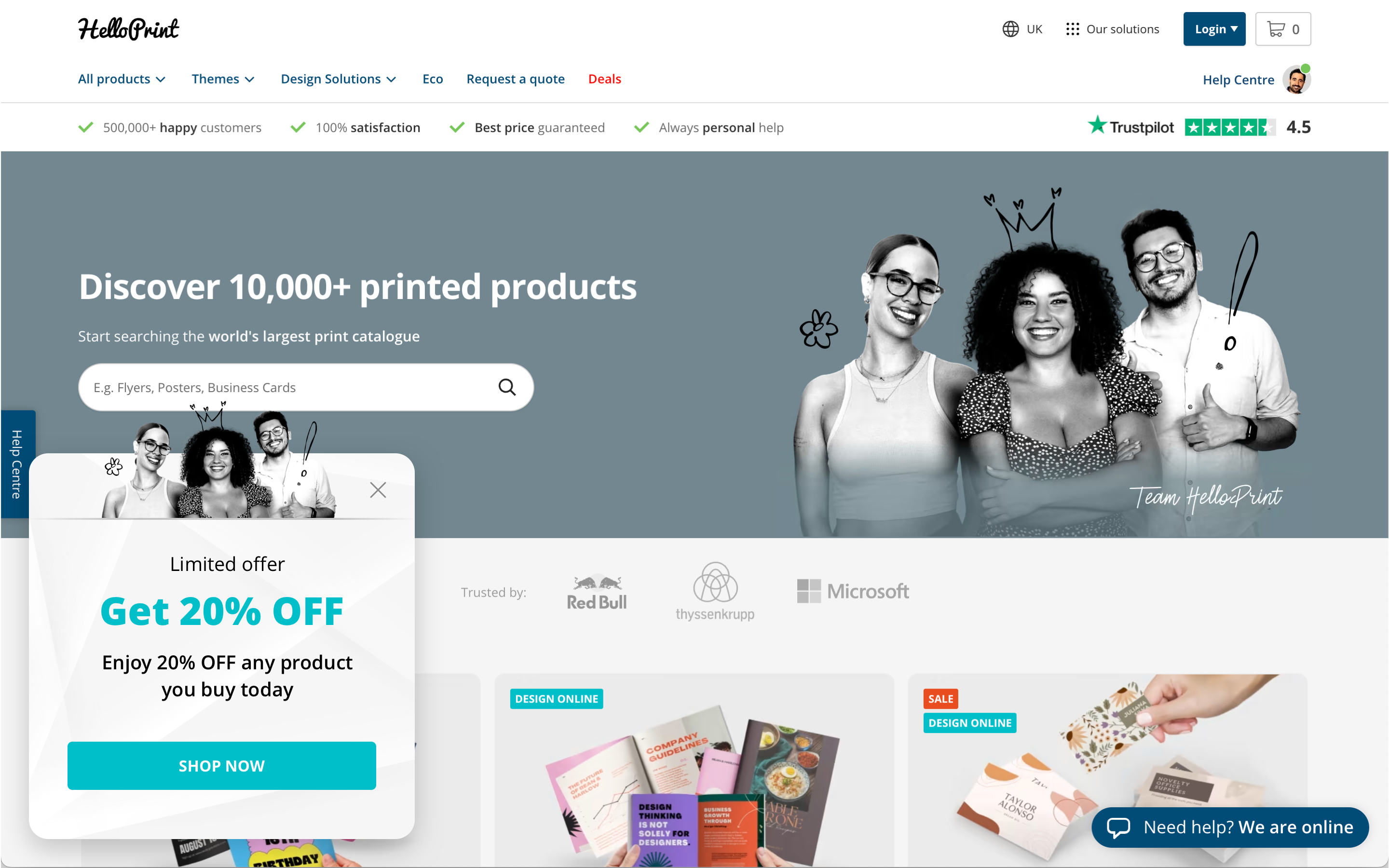
17. Tailor product page messaging to align with your ad copy
If you offer products for different customer segments, you probably realize that the same product can have different value propositions.
For instance, a blender may be practical for busy parents who require a quick, healthy breakfast, and it may also appeal to fitness enthusiasts who want to enhance their workouts with a protein smoothie.
To reach these different groups, you may use various Facebook ads based on demographics, but they’ll all lead to the same product page.
To optimize conversion rates for these ads and product pages, it’s a great idea to present customized product messaging for each group of customers.
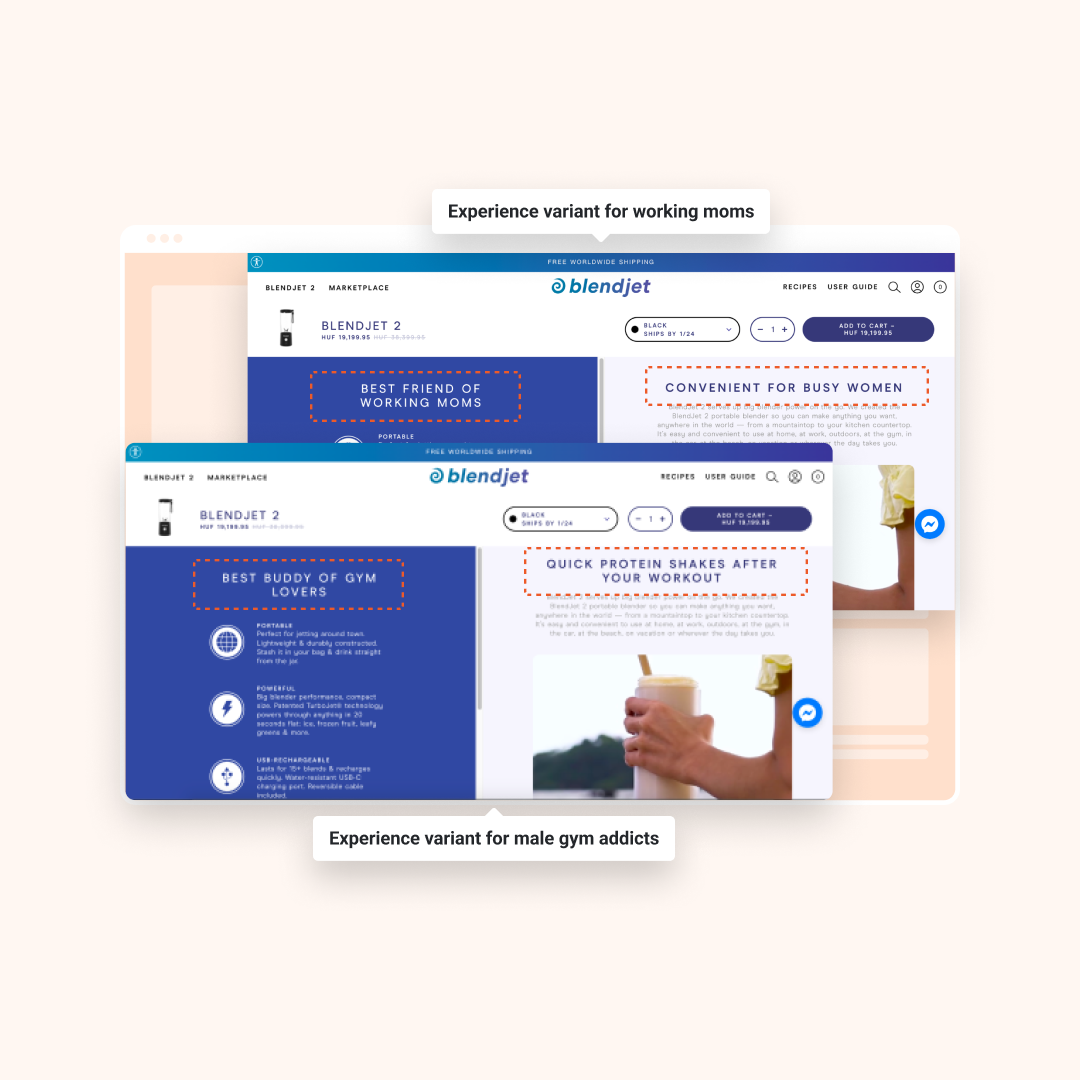
Our Dynamic Content feature can help you set up this kind of messaging easily, improving your conversion rates by at least 10%.
18. Personalize your email landing pages with the visitor’s name
If you’re like many ecommerce businesses, you probably ask for email subscribers’ first names so you can include personalized greetings in your emails to them. But why stop there?
Using this information on your email landing pages can also be beneficial. A personalized headline like “Welcome to our website, Ryan,” starts their website experience off with individualized attention, which is likely to be appreciated.
Implementing this strategy could significantly increase the conversion rate of your email marketing campaigns and ultimately enhance ROI.
Here’s an example from the Varnish+Vine ecommerce plant shop.
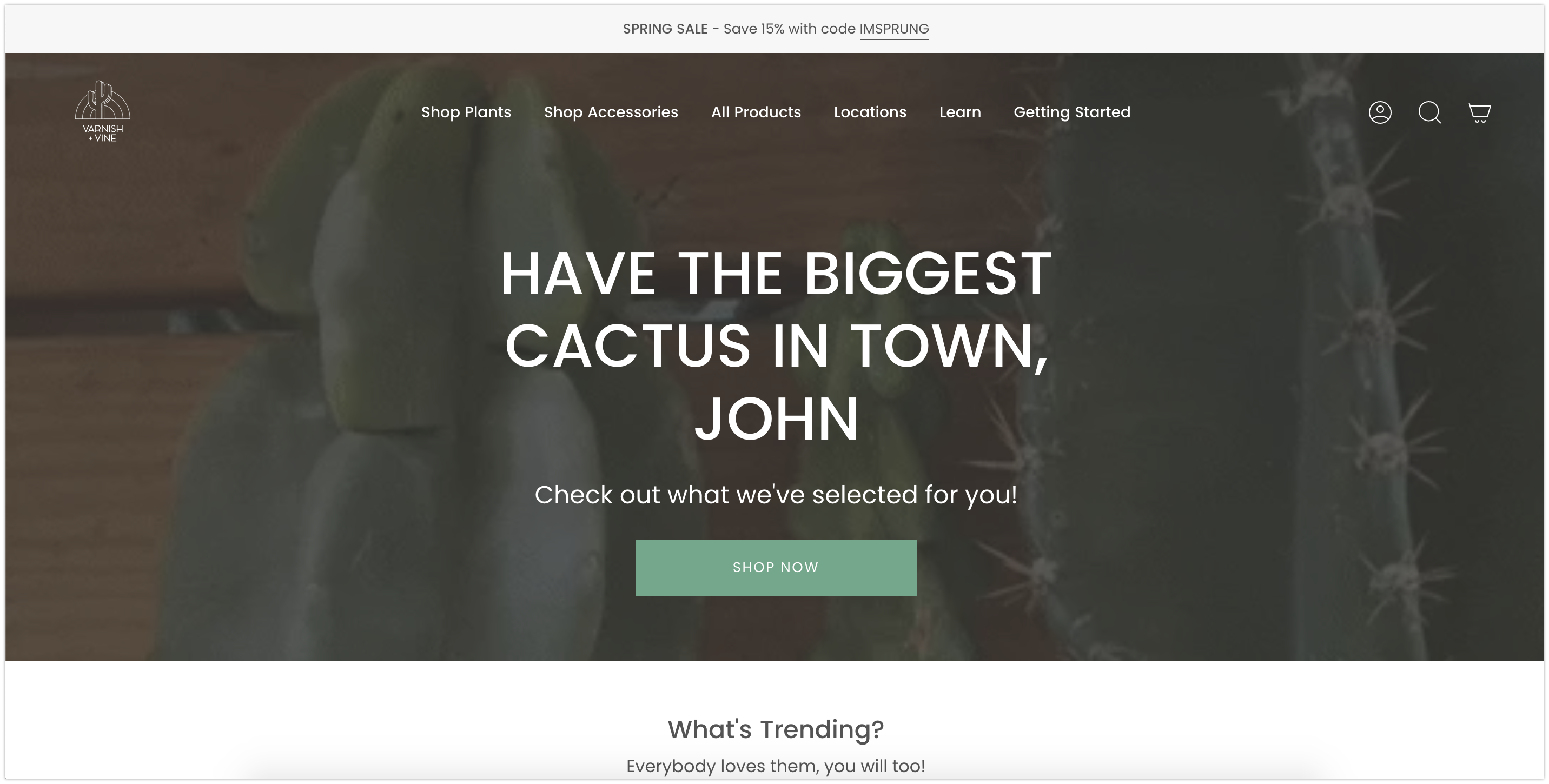
FAQ
What is an ecommerce marketing strategy?
An ecommerce marketing strategy is a comprehensive plan that an online business puts in place to promote and sell its products or services to its target audience. The strategy includes a range of tactics, such as social media marketing, email marketing, content marketing, paid advertising, search engine optimization (SEO), affiliate marketing, influencer marketing, and more.
The goal of an ecommerce marketing strategy is to attract potential customers, drive traffic to the online store, and convert visitors into paying customers. The strategy is usually tailored to the specific needs and goals of the ecommerce business, as well as the target audience it wants to reach.
What are the 4 P’s of marketing in ecommerce?
The 4 P’s of marketing in ecommerce are:
- Product: This refers to the goods or services an ecommerce business offers for sale.
- Price: This refers to the cost of the products or services that an ecommerce business offers for sale, including any discounts or promotions.
- Promotion: This refers to the methods and tactics an ecommerce business uses to promote and advertise its products or services to potential customers.
- Place: This refers to the channels through which an ecommerce business sells its products or services, such as its own website, online marketplaces, or social media platforms.
Wrapping up
That’s it for today—18 timeless strategies used by successful ecommerce websites to dramatically increase their brand awareness and revenue.
Keep in mind that finding the perfect combination of strategies that will work well for your brand and appeal to your target market is the key to success. Don’t be afraid to test, tweak, and experiment with your advertising, and always keep up with the most recent ecommerce trends.
With a bit of creativity, persistence, and these proven marketing strategies in your toolkit, there’s no limit to what you can achieve in the ever-evolving world of ecommerce. So, what are you waiting for? Get out there and start putting these strategies to work for you!

